Being sidelined from a running injury is the last thing any runner wants.
Based on this case study, more than 80% of running injuries are caused by repetitive stress and according to the same study, the knees, legs, and feet are the most common injury areas for runners.
According to the case study, the location-specific incidence of running injuries is as follows:
- Knees: 7.2% to 50%
- Lower leg: 9.0% to 32.2%
- Upper leg: 3.4% to 38.1%
- Foot: 5.7% to 39.3%
- Ankles: 3.9% to 16.6%
- Hips, pelvis, or groin: 3.3% to 11.5%
- Lower back: 5.3% to 19.1%

Now that we know that running injuries usually happen when you push yourself too hard, let’s have a look at our first common running injury of the series…
Piriformis Syndrome
Piriformis syndrome can be a real pain in the butt for runners! Literally…
Piriformis is a muscle in your glutes and hip structure, which plays a massive role in your walking gait and running gait.
Piriformis syndrome is when that muscle becomes so tight that it compresses the sciatic nerve and creates a lot of pain.
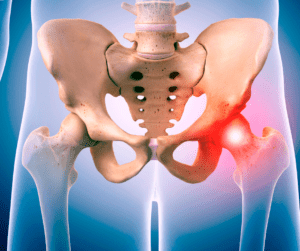
Two main causes of Piriformis syndrome:
- Some people have anatomy where the sciatic nerve runs through the Piriformis and if the Piriformis gets irritated, then there will be a pain.
- Having tight, inflexible, immobile hips. Couple with the fact that we sit at our desks for most of the day with poor posture.
We are HUGE advocates of mobility work here at Coach Parry and have created a mobility flow that you can do at home. You can access the mobility flow by clicking here.
Why Do Runners Get Piriformis Syndrome?
Our glutes are so important in stabilizing the pelvis and also in creating the ‘hip drive’ every time we step.
The Piriformis muscle (which is VERY little) has to work overtime. While it’s working constantly it’s getting tighter and tighter and if it’s weak it gets even tighter because it’s not able to contract correctly.
Now that we know what it is and how runners get Piriformis pain in the first place, let’s have a look at how we can alleviate the pain…
3 Key Stretches To Help Alleviate Piriformis Pain
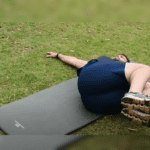
- Spine Rotation
Lie down on your back and put your arms out at shoulder height on each side of you.
Keeping both shoulders flat on the floor, bring your knees into your chest.
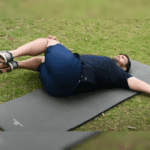
Gently roll both knees down towards the floor on your left side and hold that stretch in the lower back and glute. Then do the same on the right side.
You can use one hand to help pull the legs down and then hold for a few seconds (20 to 30 seconds). If you feel the need to repeat this, you can for two or three times on each side.

- Piriformis Stretch/ Glute Stretch
This stretch can be done either seated or standing.
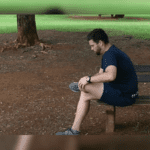
Cross your right leg over your left leg knee and lean the body forwards slightly. You can even use one hand to push your right knee down a little.
And do the same on the other side. (for 20 to 30 seconds)
None of this should be a balancing act as we are just trying to alleviate tension.
- Groin Adductor Stretch
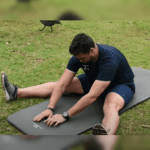
Seat yourself on the floor and place your legs out wide in front of you, keeping your knees as straight as possible.
Next, lean your body forward, place your hands on the floor if it makes it easier.
The goal is to keep your legs as straight as possible and just feel the groin stretching and hold for 20 to 30 seconds
So, we know that by doing those 3 stretches we can alleviate the pain from Piriformis syndrome… but how do we prevent it from coming back again?
Stopping Piriformis Syndrome From Coming Back
It’s important to have that muscle, not in a tight state but it’s even more important to STRENGTHEN that muscle.
The reason we need to strengthen that muscle is so that it doesn’t get weak and then in turn get tight again.
You need to do specific glute strength work to strengthen the Piriformis muscle.
Strength Exercises To Prevent Piriformis Syndrome:
- Lying on the floor clams… progressed to Clams with a band around the knees….progressed to Clams in a standing position.
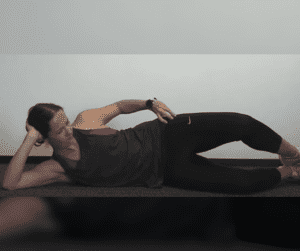
- Band walks. Putting the band around your knees and doing a couple of lateral or forward and backward walks… progressed to putting the band around your ankles.
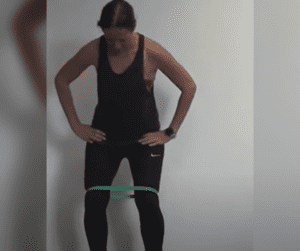
By strengthening our glutes we are helping our glutes hold out pelvis into a much more stable position every time you step and run.
Here at Coach Parry, we’re massive advocates of strength training. We’ve put together this free strength training plan for runners that you can do once a week, at home and with no expensive equipment needed. You can access it by clicking here.




Comments are closed.